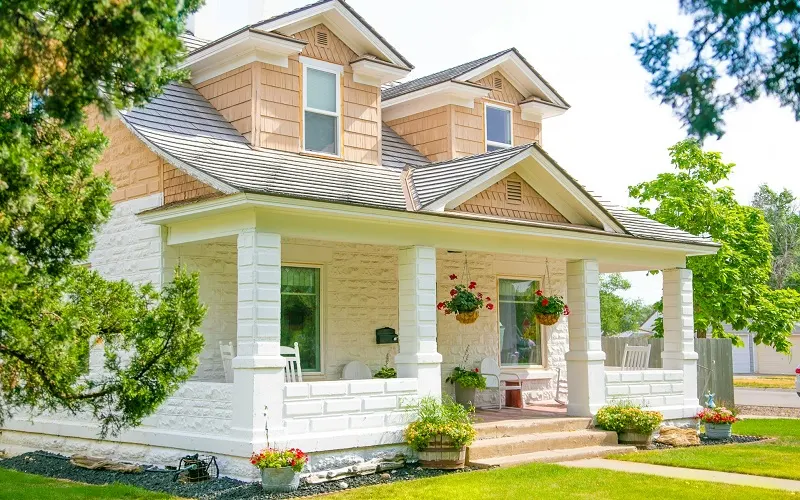Every home carries an atmosphere that extends far beyond its furniture, paint, or layout. Sometimes, stepping into a house feels like a breath of clarity—air light enough to invigorate the mind and body. Other times, the sensation is the opposite: heaviness, stagnation, and a faint sense that something is not quite right.
The distinction between freshness and staleness is subtle but powerful, influencing comfort, well-being, and even mood. The reasons behind these differences are not arbitrary. Instead, they reflect an intricate interplay of science, psychology, and sensory perception.
Understanding why some homes feel more refreshing than others requires looking at both physical and intangible factors. Air circulation, light exposure, humidity balance, and household habits form the backbone of a home’s freshness.
Yet there are also hidden layers—like the way human psychology interprets scent, space, and sound—that quietly shape impressions. When combined, these elements explain why freshness feels effortless in some spaces but elusive in others. These are the factors described below; review and feel free to quote your suggestions by contacting us.
Air Quality and the Hidden Science of Freshness
One of the most critical elements that separates a fresh-feeling home from a stale one is the quality of the air itself. Clean, well-circulated air invigorates the senses, while heavy, stagnant air makes even beautiful interiors feel suffocating.
Tiny airborne particles, invisible to the naked eye, dictate how a room feels. Dust, pollen, volatile organic compounds (VOCs) from paints or cleaners, and even lingering cooking fumes can all contribute to a home’s atmosphere.
In recent years, greater awareness has emerged about what you should know about air quality. Air purifiers, once considered a luxury, are now increasingly common in households seeking to combat pollutants and allergens.
These devices work by filtering out microscopic particles that accumulate indoors, helping to restore a sense of clarity in the air. Homes without them can sometimes develop an imperceptible heaviness—a result of unseen particles slowly accumulating. Even something as small as frequent vacuuming with a HEPA filter or placing houseplants in strategic corners can shift the way a space feels.
Equally important is ventilation. A home that regularly exchanges stale indoor air for fresh outdoor air feels noticeably lighter. Without this exchange, pollutants, moisture, and odors linger, creating that closed-in sensation many describe as staleness. Modern building practices, while energy-efficient, sometimes trap air too tightly.
The Psychological Power of Scent
Scent exerts an immediate influence on how humans perceive freshness. Unlike other senses, smell bypasses logical reasoning and connects directly to memory and emotion. A faint fragrance of lavender can evoke calmness, while a trace of citrus signals cleanliness and energy. On the opposite end, lingering cooking oils, pet odors, or even musty undertones can create a subconscious association with staleness.
This is why some homes, though clean, still feel stale: the air carries trapped odors that subtly affect perception. Freshness is less about masking scents with artificial fragrances and more about neutralizing them. Simple practices—like airing out fabrics, washing curtains, or ensuring drains remain clean—strip away the undertones that weigh down a room. When the olfactory environment feels pure, the rest of the home follows suit.
Light as a Silent Influence
While air and scent dominate immediate impressions, light plays a quieter but equally vital role in shaping how fresh a home feels. Natural sunlight has a purifying quality: it reveals details clearly, warms surfaces, and eliminates shadows where dust and dampness might collect. Sunlit rooms tend to feel more open, airy, and alive, while dim, poorly lit areas can feel closedoff and stagnant, even if they are well-kept.
Artificial lighting also influences perception. Harsh fluorescent bulbs often mimic the cold sterility of a basement, while warm, layered lighting can make a home feel welcoming and vibrant. The interplay of natural and artificial light determines whether a room feels expansive or confining.
Humidity: The Invisible Balancer
Moisture in the air is another invisible force shaping how a home feels. Too much humidity breeds mustiness, dampness, and mold growth—all strong contributors to staleness. Too little humidity, however, creates dryness, leaving the air feeling sharp and uncomfortable.
The balance lies in maintaining moderate humidity levels. Homes with consistent humidity control often feel fresher because they avoid the extremes that cause discomfort.
The Role of Space and Flow
Beyond air and light, spatial design plays a surprisingly important role in freshness. A cluttered room filled with furniture that obstructs pathways tends to feel dense and stagnant. On the other hand, open layouts or thoughtfully arranged furniture promote better air circulation and psychological spaciousness.
Even something as small as leaving a few feet of open space around frequently used areas can influence the sense of freshness. The brain interprets open, breathable spaces as less confined, creating an impression of lightness. By contrast, crowded or overdecorated rooms can feel stifling regardless of cleanliness.
Sensory Harmony and Subconscious Perceptions
Freshness is never determined by one factor alone—it is a sensory tapestry woven from multiple threads. A home where air, scent, light, and space align creates a subconscious sense of harmony. Visitors may not consciously analyze why the space feels refreshing, but their senses collectively register balance.
Sound also contributes subtly. Background noise like constant traffic or the hum of appliances can introduce a low-level heaviness, while silence or soft natural sounds foster calmness. Even texture matters: fabrics that breathe, smooth surfaces that reflect light, and natural materials that absorb excess odor all reinforce the impression of freshness.
Daily Habits that Sustain Freshness
Beyond structural elements, daily habits play a decisive role in maintaining a home’s atmosphere. Frequent cleaning, even at a micro level, prevents dust and odors from accumulating. Opening windows, even briefly, resets the air cycle. Washing fabrics regularly eliminates trapped scents. Choosing low-VOC paints or cleaners minimizes invisible pollutants.
Equally important is consistency. A home does not become stale overnight, nor does it become fresh instantly. Habits like making the bed, wiping surfaces, and decluttering daily keep staleness from gaining a foothold.
Why Freshness Shapes Comfort More Than Décor
What makes freshness especially intriguing is its power to overshadow visual design. A beautifully decorated home that feels stale rarely leaves a positive impression. Conversely, a simple, modestly furnished home that feels fresh often feels more inviting. The sensory experience dominates aesthetic judgment, proving that freshness is not merely about appearance—it is about atmosphere.
This explains why guests often comment on how a home feels rather than how it looks. Freshness signals vitality, cleanliness, and comfort at a subconscious level. It makes people linger longer, breathe easier, and relax more fully. Staleness, by contrast, creates unease, prompting visitors to shorten their stay.
Homes that master this balance offer more than shelter—they provide clarity, calmness, and an invisible sense of renewal. The distinction between freshness and staleness may seem elusive, but once understood, it becomes clear why some spaces energize the spirit while others weigh it down.




